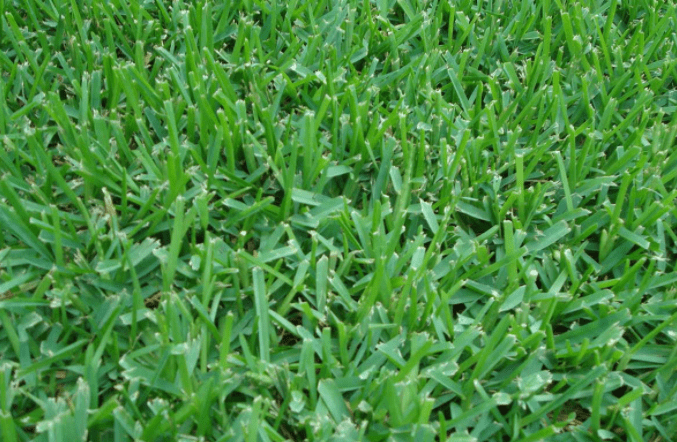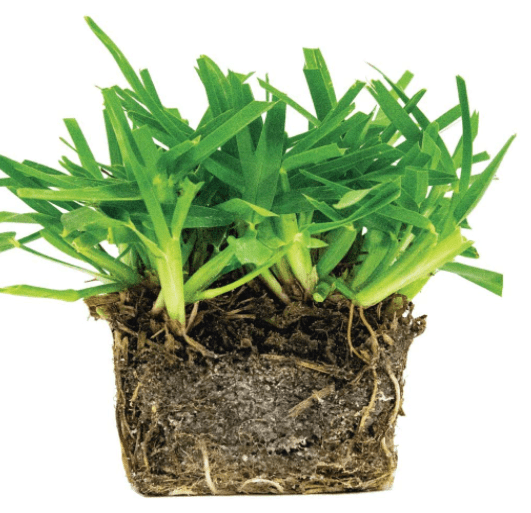St. Augustine grass is a popular turf in Florida and other warmer states. Its tolerance to heat, salt, and humidity makes it suitable for coastal yards and subtropical humid areas.
Plugs are the ideal method of planting St Augustine grass. The best time to grow St Augustine grass is in May through July when the average daytime temperature is 80 degrees Fahrenheit and nighttime soil temperature is at least 70 degrees Fahrenheit.
When to Plant St. Augustine Grass
St Augustine is a warm-season grass that thrives in sun and warmer temperatures found in the southern part of the United States. The best time to grow St Augustine grass is in May through July when the average daytime temperature is 80 degrees Fahrenheit and nighttime soil temperature is at least 70 degrees Fahrenheit.
Plant the grass plugs at least 90 days before your region’s first estimated fall frost. This will give your newly planted lawn enough time to establish before the harsh weather sets in.
With proper soil preparation, adequate timing, and care, the rooted pieces of sod will gradually spread and fill every space within them, offering a dense beautiful carpet. Here are common St Augustine grass problems you should be aware of.
You can find St. Augustine Grass plugs here: St. Augustine Grass plugs.
How to Plant St Augustine Grass Plugs – Steps
Once you have fully decided that you need St. Augustine grass in your backyard or field, here is what to do.
1. Measure the size of your planting area
Taking measurements for your planting area will help you to calculate the number of plugs you need to order from your supplier. Make a sketch map of the area on the paper and include every dimension. Take the details to your supplier for advice or use it to calculate your sod spacing intervals.
The landscaping supplier should look at the sketch map and measurements to advise you on the number of plugs you need for that specific area. Plugs can be spaced 12 or more inches apart but the closer together they are spaced, the faster the grass fills in for complete coverage.
2. Adequately prepare the soil
Kill all the weeds or pre-existing lawn grass by spraying a non-selective herbicide. After two weeks, the weeds should be dead. Rake all the debris from the area and rototill the soil to a depth of 4 to 6 inches.
Check and fix any drainage problems and slope your lawn away from the house or garage and fill low areas to avoid cases of standing water in your yard.
Take a sample of the soil, to a nearby extension agent to advise whether the soil needs fertilizer or pH amendments. When you get a clean bill of health, rake the soil smoothly to remove large soil clods, chunks, and other debris.
Then thoroughly water the area to soften the soil for easier hole digging and planting of the plugs.
3. Dig holes for the sods
Take a shovel or a plugger tool and make holes the right size to accommodate your St. Augustine grass plugs. Using a plugger tool makes it much easier to be accurate. Dig the holes in a checkerboard pattern considering the recommended spacing distance between each sod.
Once the planting holes are ready, you may apply lawn starter fertilizer in each hole depending on the recommendations made by your soil extension agent. Soil pH amendment may also be done before the digging of the holes is done.
4. Plant the grass plugs
Safely place the plugs in the holes one after the other as you securely tap the soil around them to ensure proper soil-plug contact. Ensure there are no pockets left around the plug as this will cause roots to dry out. You can find grass plugs online here: St. Augustine Grass plugs.
5. Water the grass plugs
Thoroughly water the planted area three to five times a day for up to 10 days. As your new grass grows and flourishes, water deeper and less frequently – this will encourage the roots to extend deeply into the soil.
6. Mow the established grass
After 14 to 15 days, your St Augustine grass has begun spreading, and firm roots are now established. At this time, you will have some difficulty pulling up a plug from the soil. This will be the ideal time to mow your actively growing grass. Exercise caution the first time you mow to avoid pulling up the sod
Mow at or above two inches for the first few times. When your new lawn reaches over three and a half inches tall, mow off a third of the height and collect the clippings. You may start lowering the cutting height slowly by slowly every time you mow.
7. Continue with normal watering
Your new lawn needs thorough watering in week 1 and week 2. In the third week, you should reduce watering to 1-3 times per day and sometimes skip a day between watering if the lawn is not drying out.
In the fourth week, water 1-2 times every other day. In the fifth week onward, your lawn should go 2 to 3 days between watering unless there is extreme drought.
How to Make St Augustine Grass Spread Quickly

You can make your St Augustine grass spread faster, and grow thick and dense through the following ways:
- Choose your soil wisely – St Augustine grass loves well-drained soil with a pH level of 5.0 to 7.0. This is why it is important to take a soil sample to an extension offer for analysis.
- Use starter fertilizer that is high in phosphorous – Lightly add your starter fertilizer into the top 2-3 inches of topsoil.
- Plant the grass during warm spring or summer – St Augustine is a warm season type of grass that thrives in hot weather.
- Remove weeds as soon as possible – Weeds compete for resources and their presence in the lawn will negatively affect the growth of your lawn. Get rid of the weeds as soon as you discover them
- Provide good watering – This is very essential, especially during the first weeks of the growth. Avoid overwatering when the grass is fully established.
- Mow your grass appropriately – Ensure your mower blades are sharp and that you don’t mow more than one-third of the grass’s height. You may leave the grass clippings on the lawn.
- Control Bugs and diseases – St Augustine grass need protection from pests such as grubs and sod worms and fungal diseases which usually cause brown patches and greying of leaves. Contact your local extension agency for appropriate treatment.
Final Thought
St Augustine grass is an easy-to-maintain grass that establishes quickly. The only requirement is to plant the plugs correctly, water them adequately, and provide proper lawn maintenance practices that involve mowing, fertilizing, and watering.
Resources
- How to Plant Grass Plugs – Seedland.com
- New Sod Care – Green Valley Turf Company
- How to Plant St. Augustine Grass – Scotts.com


Is it ok try plant St Augustine Grass in Sand or Plant only in Rich Fertilizer TopSoil
St. Augustine grass thrives in sandy soils as long as you are in warmer climates.